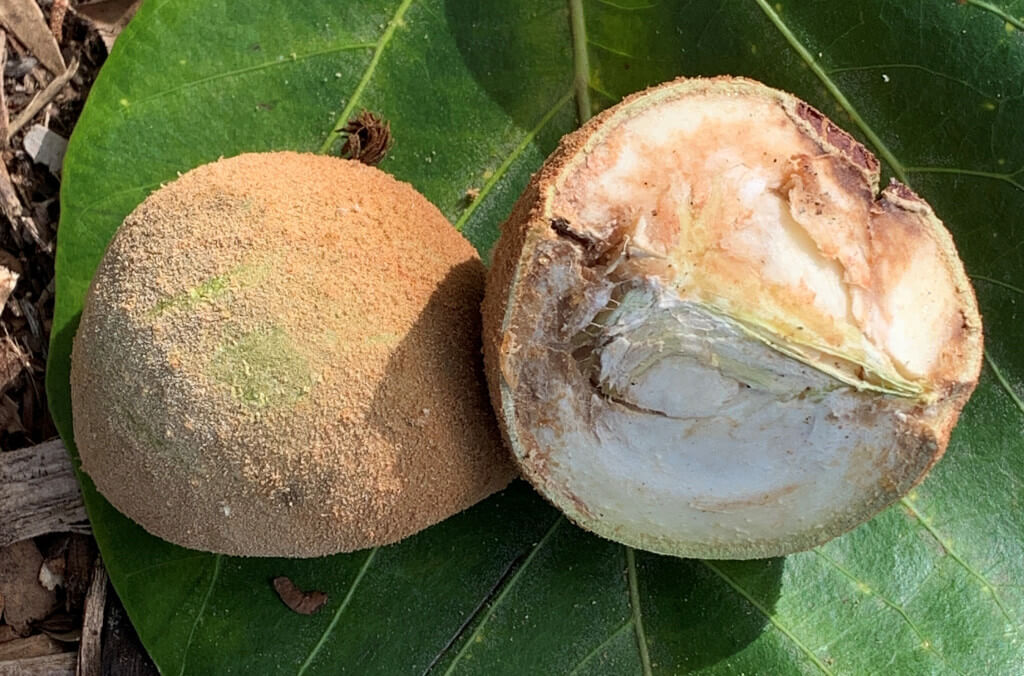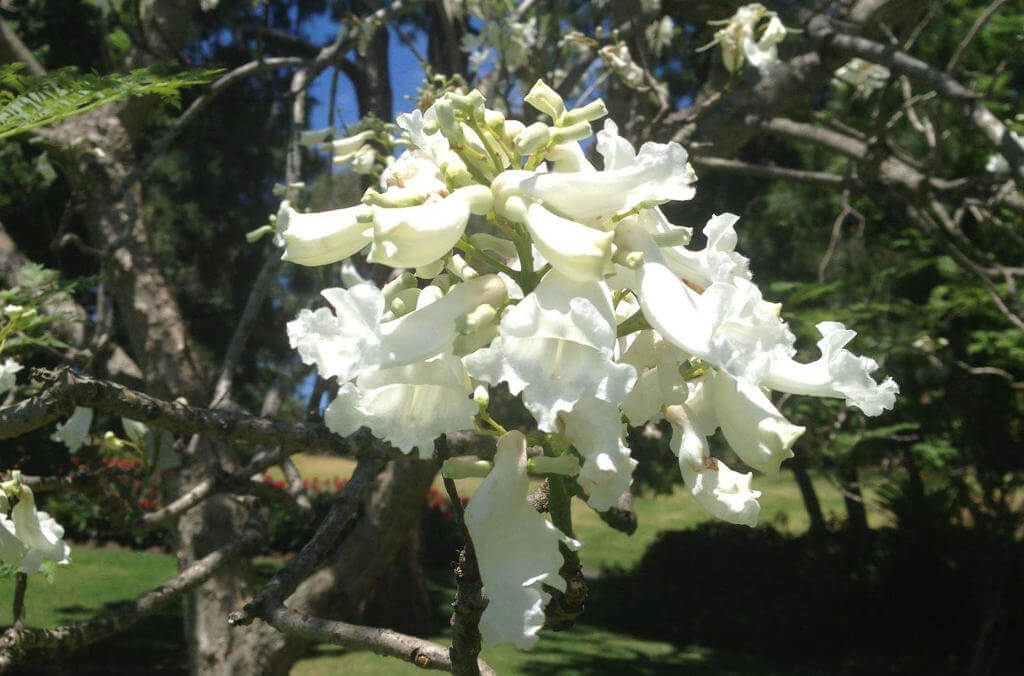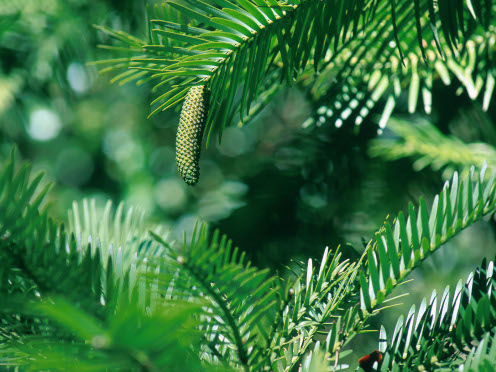Purple and White Jacarandas headline this month’s must-see tour
Take a leisurely stroll around the garden to discover flowers and fruit from around the world.
Candlenut Tree - Aleurites rockinghamensis
Now is a good time to see the fruit hanging from the branches of this tree from tropical northern Australia. The common name tells all - the soft white kernels have such a high oil content that they can be burned like candles. The Yirrganydji and Djabugay Aboriginal people of far north Queensland call this tree Ngapa-la and use it for food, medicine and tool making. Seeds are poisonous if not prepared correctly but a closely related species from SE Asia is commonly used in cooking. Family: Euphorbiaceae

Green Strangling Fig - Ficus watkinsiana
This large strangler fig is common in rainforests from the Hunter region to northeast Queensland, and shares habitat with the Moreton Bay fig, and Port Jackson fig. While it often starts life as an epiphyte on branches of rainforest trees, eventually strangling its host, it can also grow as a single tree with large buttressed roots. Trees produce separate male and female flowers and like all fig species has coevolved with its very own pollinating fig wasp species.Family: Moraceae
White Jacaranda - Jacaranda mimosifolia 'Alba'
Forty-nine species of Jacaranda occur in South America but this species, has become one of the world’s most popular ornamental trees. It has been extensively planted in Australia since being introduced in the early 1850s. A nearby tree in our lower garden first flowered in 1868. The white form introduced to Australia in 1960 by Bellingen doctor, George Hewitt and our specimen was planted in 1991. Family: Bignoniaceae

Kangaroo Paw - Anigozanthos varieties
Easily recognised as one of Australia’s most iconic flowering plants, the Kangaroo Paw is a highly valued plant by gardeners in Australia and around the world. There are 11 recognised species in the genus and all occur in the southwest of Western Australia. They can cross pollinate, allowing plant breeders to create new varieties well suited to growing in gardens. However, all require full sun and good drainage to perform at their best. Family: Haemodoraceae
Natal Lily - Crinum moorei
Everything about this bulbous plant from South Africa is big. The bulbs grow to around 20 cm diameter, large strappy leaves grow a metre above the ground and pink or white tubular flowers rise well above the foliage. Flowers have a sweet fragrance, and the plant grows best in light shade. Although popular in gardens and naturalised in other countries, in its native habitat it is not widespread and is threatened by overcollection and predation by caterpillars. Family: Amaryllidaceae
Pacaya - Chamaedorea tepejilote
This palm is one of 110 species in the genus and nearly all are foundin the understorey of rainforests in Central and South America. Pacaya grows to 7 metres tall with bamboo-like green stems and prominent leaf scars. Plants have either male or female flowers. The new male flowers look like an ear of corn and are a traditional foodin Guatemala and El Salvador. The female flowers are followed by black fruit which are attached to the trunk by a striking orange stem.Family:Arecaceae
Pitcher Plant - Sarracenia leucophylla
Sarracenia are herbaceous perennial hooded carnivorous plants native to the south eastern United States. The pitchers are narrow, green at the bottom, becoming white with green venation on the top part, mouth and lid. The lids are attractive landing sites for insects looking for nectar. Insects fall down the slippery tube, ending up in digestive juices at the bottom of the pitcher. In spring a single bright red flower emerges on a stalk which is separated from the pitcher to help ensure they trap prey and not insect pollinators.Family:Sarraceniaceae
Dorrigo Waratah - Alloxylon pinnatum
Like its close relative the Tree Waratah (Alloxylon flammeum), the Dorrigo Waratah is a rainforest tree with spectacular pink-red flowers clustered together at the end of the branches. Nectar rich flowers attract birds and are visited by the Richmond Birdwing butterfly. This tree has a restricted distribution, occurring on the Dorrigo Plateau in NSW and the Mcpherson Range on the NSW Queensland border.Plants are difficult to grow in cultivation and best grafted onto Tree Waratah rootstock. Family: Proteaceae
Want to dig up more Garden news?
Follow @botanicsydney to stay up to date with all the spring buzz, latest plant stories and updates.

This month's tour features rare and resilient plants that have survived for millennia.

Botanical art is putting the impacts of climate change on plants in the spotlight following the opening of The Garden Gallery and new labs for the Research Centre for Ecosystem Resilience (ReCER) at the Royal Botanic Garden Sydney.
Tropical gems and temperate favourites feature on this month's tour.